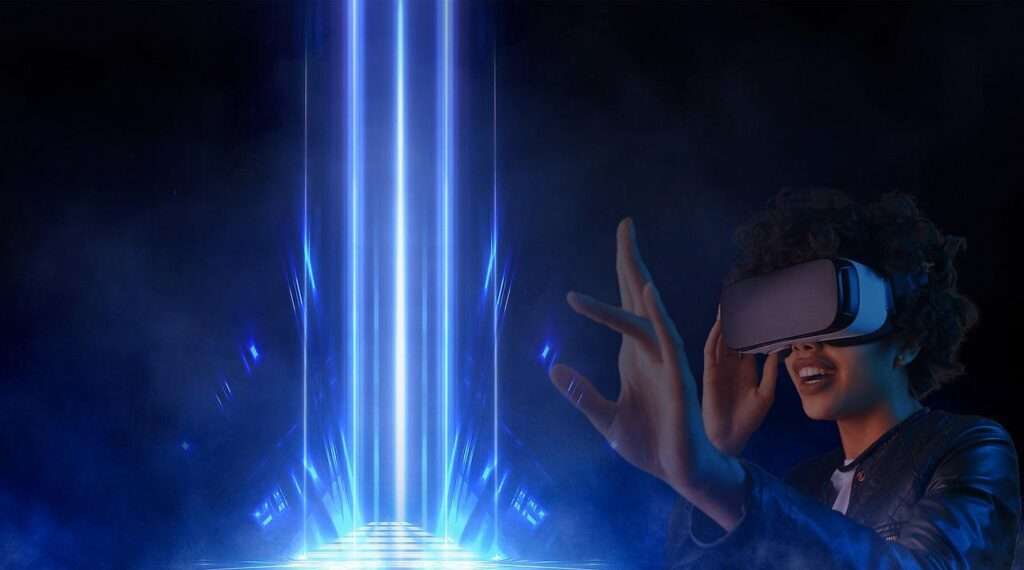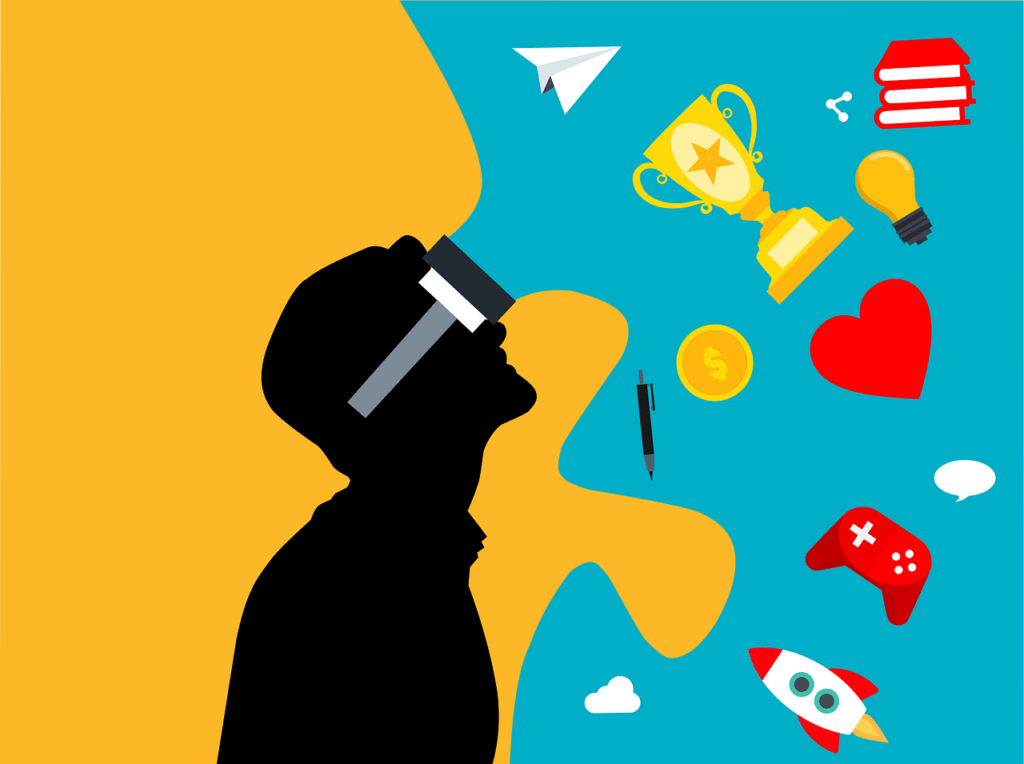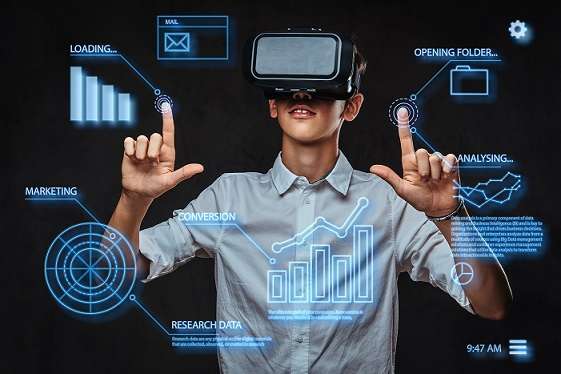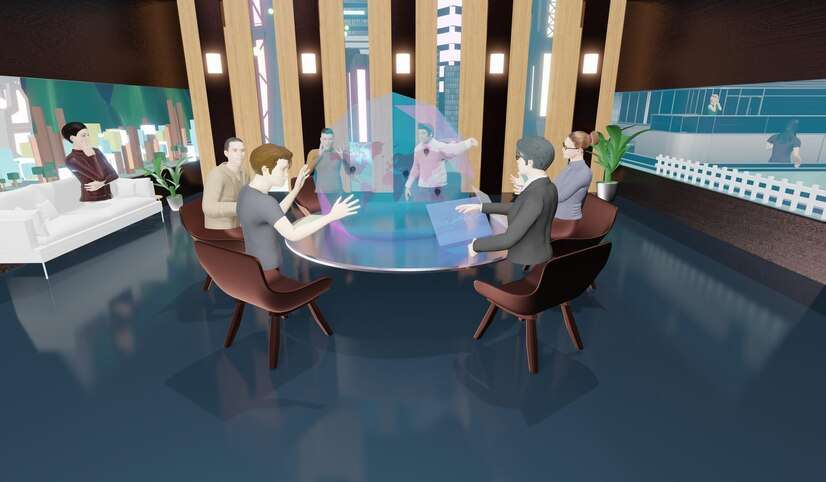Photographing ordinary objects only affects the emulsion on the photographic plate. Due to this, the photograph only records a certain intensity distribution. Normal photographs lose the phase distribution at the photograph’s plane. Holography is about creating a unique photographic image without using a lens. It appears as an unrecognisable pattern of stripes and whorls after image projection. It is a three-dimensional image that provides a completely new experience to photography. Let’s find out what holography is and how it can change the future of the metaverse.
What is Holography?
Holograms are virtual 3D images created by the interference of light beams that reflect real objects. Holograms preserve original depth, parallax, and other properties. Displaying visually appealing products while presenting complex technical concepts is easy with them.
What exactly is a hologram? Holograms are reflections of real physical objects generated by interfering light beams. Holograms are visible to the naked eye, unlike conventional 3D projections.
There are two ways to create holograms: with augmented reality glasses, and with optical displays. Depending on the method used, there are two types of holograms – stereotypical and realistic.
Holography and Augmented reality
With the advent of augmented-reality/virtual-reality (AR/VR) headsets, the metaverse became more accessible. It’ll take time for holographic metaverse experiences to become mainstream. Holography is one of the key drivers of the virtual world’s technological breakthrough.
The next decade will shape XR (extended reality) and immersive digital experiences. Both virtual metaverses and embedding virtual content in physical spaces benefit from this advantage. Entertainment, education, fashion, gaming, e-commerce, videoconferencing, and more all rely on these platforms.
In the metaverse, AR, VR, and mixed reality are merged with blockchain technology to create a single, universal, and immersive virtual world. Extending reality encompasses all digital-reality variants, including extended holographic reality (HXR). The key differences between these terms relate to how realistically the physical and digital worlds can be depicted.
The concept of augmented reality (low immersion) overlays digital elements on the real world.
Mixed reality (MR) creates an environment in which virtual and physical elements interact. Virtual reality (VR) combines the physical world and its digital counterpart to create a seamless experience for the user. In virtual reality, people can also arrange meetings. The term XR (hybrid immersion) refers to any technology that alters reality by adding digital elements to physical environments. Full immersion (HXR) provides realistic, high-resolution 3D images.
VR/AR glasses and headsets currently use all modes of immersive digital technologies except for HXR, which is very new. User experience continues improving, but issues remain before the metaverse scale.
Some XR applications, for example, only allow one user to adapt partially to their environment despite their advanced features. Besides, it would be impossible to read a book, glance up from the page, and then focus your eyes far away to see the leaves of a tree in real life. Virtual reality is currently only accessible with headsets or prescription glasses, which many users find annoying. Despite AR/VR headsets and glasses being available for several years, their limitations have drastically slowed their adoption.
How does Holography work?
In 1971, Dennis Gabor won the Nobel Prize in physics for inventing holography. The leaser beam creates the light waves. After they are recorded, a second light wave is superimposed, referred to as the reference beam, so they can be reconstructed. Holography creates 3D images. People can use the technology in medicine, defense, weather forecasting, virtual reality, digital art, and more.
Holographic images can enhance XR in the virtual world by creating a more realistic environment without causing eye strain. Besides, it allows users to explore virtual environments, inspect objects from multiple angles, and even see behind them by providing depth-perception clues. CMOS devices, spatial light modulators, and diffractive optics enable high-resolution 3D images without requiring users to wear glasses.
Holographic 3D experiences require using CMOS technology, which is inexpensive and highly scalable. Despite microelectromechanical-system devices’ obvious appeal, MEMS components delivered inferior results and were far more expensive.
In contrast to conventional imaging methods, CMOS technology can produce gigapixels rather than megapixels. The convergence of physical and digital worlds is coming, and leading technology companies have invested in metaverse-related technologies like chipsets, software, development platforms, wearable devices, holographic displays and metaverse applications. Furthermore, HXR technology will play a significant role in bringing the metaverse to fruition, reshaping how we communicate, share information, and experience virtual worlds in the decade ahead.
In Summary
Holography uses digital imaging inputs and provides extensive data visualization for training doctors, surgeons and students. Using holography, medical students and doctors can learn, promote and entertain themselves about the body. Holography is about to evolve in the near future. Holograms can improve training, design, and visualization in many business and production settings.
Source:
O?Toole, Lori, et al. “EE Times Europe – Holography Will Bring the Metaverse to Life.” EE Times Europe, 15 Dec. 2022, www.eetimes.eu/holography-will-bring-the-metaverse-to-life.










